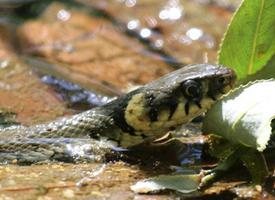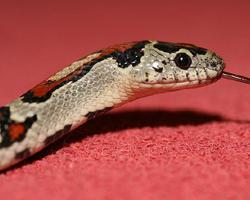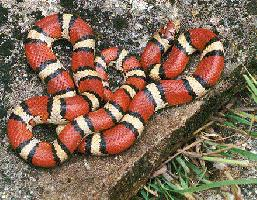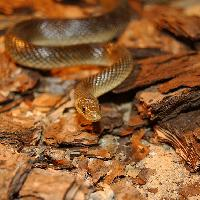
Popis zvířete
The Aesculapian snake (Zamenis longissimus), a non-venomous serpentine species, is a fascinating creature that boasts a rich history and a wide geographical distribution across Europe. Named after Asclepius, the Greek god of healing, due to its symbolic association with medicine and healing in ancient mythology, this species embodies a unique blend of cultural significance and natural beauty.Morphologically, the Aesculapian snake presents a slender and muscular physique, capable of reaching lengths up to 2 meters, although most individuals are commonly found to be between 1 and 1.5 meters in length. The coloration of these snakes varies with age and habitat, generally displaying a glossy, dark green or brownish back with a yellowish or whitish belly. Juveniles often feature a more striking pattern, with dark spots along their backs that gradually fade as they mature. This adaptive coloration not only serves as a camouflage amidst the foliage and underbrush of their natural habitats but also plays a crucial role in thermoregulation, enabling these ectothermic creatures to efficiently absorb solar radiation.
Inhabiting a variety of environments, from dense forests and woodland areas to rocky hillsides and even urban outskirts, the Aesculapian snake exhibits remarkable adaptability. Its preference for warm, humid climates often leads it to bask in sunlit areas during the day, while it seeks refuge in cooler, shaded regions or beneath rocks and debris to maintain its body temperature.
The diet of the Aesculapian snake primarily consists of small mammals, birds, and occasionally eggs, which it hunts with remarkable agility and precision. Employing a combination of stealth, speed, and constriction, it is able to subdue its prey with efficiency. This species is known for its docile nature and, when threatened, is more likely to flee or hide rather than display aggression.
Reproduction in Zamenis longissimus is oviparous, with mating occurring in the spring following their emergence from hibernation. Females lay clutches of 5 to 15 eggs in early summer, which they often deposit in warm, moist locations to ensure optimal conditions for incubation. The eggs hatch after approximately two months, revealing fully independent juveniles ready to embark on their solitary lives.
Despite its resilience and adaptability, the Aesculapian snake faces threats from habitat destruction, road mortality, and persecution stemming from human fear and misunderstanding. While currently listed as Least Concern by the IUCN, its populations in certain areas have experienced declines, highlighting the need for continued conservation efforts to ensure the survival of this remarkable species.
In conclusion, the Aesculapian snake represents a vital component of its ecosystem, serving as both predator and prey in its natural habitat. Its historical and cultural significance, coupled with its ecological role, underscores the importance of preserving this species and its environment for future generations to appreciate and study.
Mapa výskytu
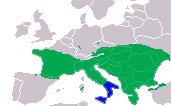
Podobná zvířata
Nové fotografie zvířat
Top 10 zvířat
- Chinese water dragon (Physignathus cocincinus)
- Galápagos tortoise (Geochelone nigra complex)
- Dolphin gull (Leucophaeus scoresbii)
- Japanese macaque (Macaca fuscata)
- Colombian red howler (Alouatta seniculus)
- Sea urchins (Echinoidea)
- Moustached guenon (Cercopithecus cephus)
- Diana monkey (Cercopithecus diana)
- Common reed warbler (Acrocephalus scirpaceus)
- Common house mosquito (Culex pipiens)
